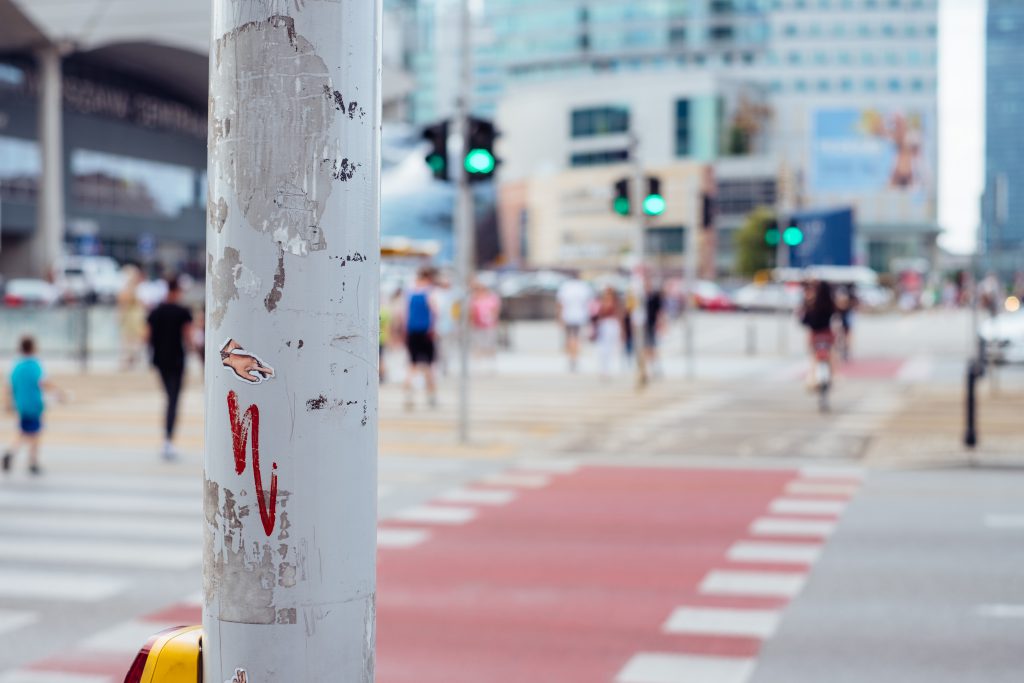Exploring The Symbolism Of The Hot Cross Bun In Christianity
Significance of the Bun Shape
Representation of the Crown of Thorns
Significance of the Bun Shape
– Represents the crucified body of Christ, with its four quadrants representing the 4 cardinal instructions or the four evangelists.
– The round shape symbolizes eternity, representing the endless love and sacrifice of Christ.
Representation of the Crown of Thorns
– The cross’s raised ridges resemble the crown of thorns that was placed on Jesus’ head throughout his crucifixion.
– This symbolism serves as a reminder of Christ’s suffering and sacrifice for humanity.
– The spices used in baking the buns, similar to cinnamon and nutmeg, had been believed to characterize the spices used to anoint Jesus’ body for burial.
Symbol of Christ’s Suffering
Significance of the Bun Shape as a Symbol of Christ’s Suffering
The bun form of the recent cross bun holds deep symbolic significance inside Christianity, representing elements of Christ’s struggling and demise:
- Rounded Shape: The roundness of the bun symbolizes the unity and wholeness of the Christian neighborhood, introduced together via Christ’s sacrifice.
- Cross Embossed on Top: The incised or embossed cross on the highest of the bun represents the cross upon which Christ was crucified, a reminder of his suffering and sacrifice for humanity’s sins.
- Size and Weight: The small size and weight of the bun symbolize the common-or-garden nature of Christ’s demise and the insignificance of worldly possessions compared to spiritual salvation.
- Brown Crust: The brown crust of the bun resembles the wooden of the cross, additional emphasizing the connection between the bun and Christ’s crucifixion.
The hot cross bun, therefore, serves as a strong image of Christ’s sacrifice and the central function of his crucifixion in Christian religion.
Cross Design and Symbolism
Symbolic Depiction of the Crucifix
A cross is a logo of Christianity, representing the crucifixion of Jesus Christ and the Christian faith. The cross is utilized in varied varieties, including the crucifix, which depicts the crucified Christ, and the cruciform, which is a cross-shaped design.
The cross has many symbolic meanings in Christianity. It represents:

- The death and resurrection of Jesus Christ.
- Salvation from sin via Jesus’ sacrifice.
- Victory over death and the power of evil.
- Love and compassion.
The cross is also used as an emblem of protection and blessing. It is usually used in jewelry, art, and architecture. The cross is a powerful and meaningful symbol that is revered by Christians.
Reminder of Christ’s Sacrifice
Cross Design and Symbolism, Reminder of Christ’s Sacrifice
The cross is a powerful image of Christianity, representing both the suffering and triumph of Jesus Christ.
History of the Cross in Christianity
- Early Christians used the cross as a secret image to determine themselves.
- Emperor Constantine adopted the cross as a symbol of the Roman Empire in the 4th century.
- The cross became a widespread symbol of Christianity after the Roman Empire converted to the faith.
Types of Crosses
- Latin Cross: The most common kind of cross, with a vertical beam intersected by a shorter horizontal beam.
- Greek Cross: A cross with four equal arms, representing the 4 cardinal directions.
- Celtic Cross: A Latin cross with a circle across the intersection, representing eternity.
- Maltese Cross: A cross with eight arms, representing the eight beatitudes.
Symbolism of the Cross
- Suffering and Sacrifice: The cross represents the suffering and sacrifice that Jesus endured on behalf of humanity.
- Victory and Salvation: The cross additionally represents victory and salvation, as Jesus’ death and resurrection defeated sin and demise.
- Hope and Renewal: The cross is a symbol of hope and renewal, representing new life in Christ.
- Reminder of Christ’s Presence: The cross serves as a reminder of Christ’s presence in our lives.
The Cross in Art and Architecture
- The cross has been depicted in art and architecture throughout historical past.
- Crosses could be found in church buildings, cathedrals, and different spiritual buildings.
- Crosses are additionally used in jewelry, clothing, and different religious objects.
Conclusion
The cross is a robust image of Christianity, representing each the suffering and triumph of Jesus Christ. It serves as a reminder of Christ’s sacrifice, a logo of victory and salvation, a supply of hope and renewal, and a reminder of Christ’s presence in our lives.
Ingredients and Their Interpretations
Spices and Flavorings
Ingredients and Their Interpretations:
Flour: Bread of life (John 6:35)
Water: Baptism (Matthew 28:19)
Yeast: The Holy Spirit
Salt: Purification
Spices and Flavorings:
Cinnamon: The crucifixion
Nutmeg: The resurrection
Cloves: The nails on the cross
Ginger: The spices used in the embalming of Jesus
Vanilla: The sweetness of heaven
Cinnamon: Symbolic of Christ’s Divinity
– Cinnamon: Symbolic of Christ’s Divinity
Nutmeg: Representation of Spices Used in Christ’s Burial
Nutmeg: Representation of Spices Used in Christ’s Burial
- Nutmeg was among the many expensive spices (myrrh) used to prepare Jesus’ physique for crucifixion.
- Nutmeg’s inclusion in the hot cross bun symbolizes the embalming of Jesus’ physique before burial.
- It represents the respect and honor accorded to Jesus’ physique, reflecting the significance of his demise and resurrection within the Christian faith.
Raisins and Currants
Raisins are often used to represent Jesus’ blood. They are a dark fruit, which may be seen as an emblem of dying. However, they are also sweet, which could be seen as an emblem of resurrection. This duality makes raisins a robust symbol of the sacrifice and triumph of Jesus Christ.
Currants are additionally thought to characterize Jesus’ blood. They are a small, dark fruit that is usually utilized in baking. Currants may be seen as a symbol of the smallness and humility of Jesus, in addition to the struggling that he endured for the sake of mankind.
Symbol of Christ’s Blood
Ingredients and Their Interpretations
Flour: Represents the physique of Christ.
Water: Symbolizes purification and redemption by way of baptism.
Yeast: Indicates the resurrection and new life.
Salt: Preserves and purifies.
Spices (such as cinnamon, nutmeg, and ginger): Represent the spices used to embalm Jesus’ physique.
Symbol of Christ’s Blood
The cross-shaped incision on top of the bun symbolizes the crucifixion and the shedding of Christ’s blood for the forgiveness of sins.
Reminder of the New Testament
Of course. Here is a protracted and detailed answer about Ingredients and Their Interpretations, Reminder of the New Testament in language English, wrapped in
tags:
Ingredients and Their Interpretations
The components used in hot cross buns are said to have symbolic meanings. For instance, the flour is said to represent the body of Christ, the water is alleged to represent his blood, the yeast is alleged to characterize the Holy Spirit, and the salt is alleged to characterize the apostles.
The cross on high of the bun is claimed to symbolize the crucifixion of Christ. The spices used within the bun, corresponding to cinnamon and nutmeg, are said to symbolize the spices that have been used to anoint Christ’s physique before his burial.
Reminder of the New Testament

Hot cross buns are sometimes eaten in the course of the season of Lent, which is a time of fasting and repentance leading up to Easter. The buns are a reminder of the sacrifice that Christ made on the cross and his resurrection from the dead.
The eating of hot cross buns can be a approach to bear in mind the New Testament story of the Last Supper. At the Last Supper, Jesus shared bread and wine together with his disciples, telling them that they represented his body and blood.
Hot cross buns are a scrumptious and meaningful approach to celebrate the Easter season. They are a reminder of the sacrifice that Christ made for us and of his resurrection from the dead.
Other Symbolic Aspects
Baking Season and Timing
Other Symbolic Aspects
– The cross-shaped incision on the bun represents the crucifixion of Jesus Christ.
– The bun’s brown shade symbolizes the earth and the body of Christ.
– The white cross on the bun represents the purity and victory of Christ over death.
Baking Season and Timing
- Hot cross buns are historically baked and eaten through the Christian season of Lent, which begins on Ash Wednesday and ends on Easter Sunday.
- The first hot cross buns are typically baked on Good Friday, the day commemorating the crucifixion of Jesus Christ.
- Hot cross buns are often eaten as a way to mark the top of Lent and the beginning of Easter.
Connection to Lent and Easter
Other Symbolic Aspects:
The four quarters of the bun characterize the four Evangelists (Matthew, Mark, Luke, and John). The cross on high represents the crucifixion of Jesus Christ. The spices used in the bun symbolize the spices used to anoint Jesus’s body earlier than his burial.
Connection to Lent and Easter:
The hot cross bun is historically eaten through the season of Lent, which is the 40-day period main as much as Easter. During Lent, Christians traditionally quick or surrender sure meals as a method of preparing for the celebration of Easter. The hot cross bun is a reminder of the sacrifice that Jesus made on the cross and the hope of his resurrection.
On Easter Sunday, hot cross buns are sometimes eaten as a symbol of the resurrection of Jesus Christ. The cross on high of the bun represents the victory of Jesus over demise and the hope of everlasting life.
Timing as a Reflection of Christ’s Resurrection
– Celebrating the resurrection of Jesus Christ, who died and rose once more on the Cross

– The buns are made on Good Friday and eaten on Easter Sunday, which represents Christ’s death and resurrection.
– The white flour represents the purity of Christ’s body, whereas the yeast represents his resurrection
– The cross on high of the bun represents the crucifixion of Jesus.
– The cinnamon or fruit in the bun represents the spices used to anoint Jesus’ body before burial.
– The cross form signifies the victory of Christ over demise and sin.
– Buns eaten at Easter are blessed by clergymen to represent the blessing of the paschal lamb
Cultural and Religious Variations
–
–
–
–
–
–
–
–
–
–
–
–
–
–
–
–
Differences in Bun Shapes and Ingredients
Other Symbolic Aspects
The cross on the bun represents the cross of Christ, on which he was crucified and died. The four quadrants shaped by the cross symbolize the 4 directions of the world, representing the belief that Christ’s message of salvation is for all people.
The buns are often eaten through the Easter season, which commemorates the resurrection of Christ. The symbolism of the bun thus extends to the resurrection, with the rising of the dough representing the rise of Christ from the lifeless.
Differences in Bun Shapes and Ingredients
The form of the buns can differ depending on the recipe or geographical location. Some buns are round, whereas others are formed like a cross. The dough is usually made with flour, water, yeast, and sugar, however some recipes could embrace additional components such as spices, raisins, or dried fruit.
The buns are often topped with a cross made from a easy flour and water paste. The cross could be piped onto the bun or cut out of a bit of dough and placed on high. Some buns may also be topped with a glaze or sprinkle of sugar.
The elements and form of the buns may range, however the symbolism remains the identical. The Hot Cross Bun is a robust symbol of Christianity, representing the crucifixion and resurrection of Christ and the hope of salvation.
Regional Traditions and Customs
Other Symbolic Aspects
The hot cross bun can also be said to represent the 4 nails used to crucify Jesus. The cross is usually made with a dough strip that’s laid throughout the bun, and the 4 ends are pinched collectively to represent the nails.
Another interpretation of the cross is that it represents the 4 Gospels of the New Testament. The four arms of the cross are mentioned to represent the four Gospels of Matthew, Mark, Luke, and John.
In some cultures, the new cross bun can also be stated to symbolize the four seasons of the year. The cross is said to represent the solar, and the four arms of the cross are said to symbolize the four seasons.
Regional Traditions and Customs
The hot cross bun is a popular food in lots of international locations around the globe, and there are heaps of regional variations on the recipe. In the United Kingdom, hot cross buns are traditionally eaten on Good Friday, the day before Easter. They are sometimes served with butter or cheese, and typically with eggs.
In the United States, hot cross buns are sometimes eaten during the Easter season. They are often served with ham or lamb, and typically with eggs.
In some nations, hot cross buns are also utilized in spiritual ceremonies. In the Greek Orthodox Church, Hot Cross Bun Recipe cross buns are used to bless the faithful on Good Friday. In the Armenian Apostolic Church, hot cross buns are used to celebrate the feast of the Resurrection of Jesus.